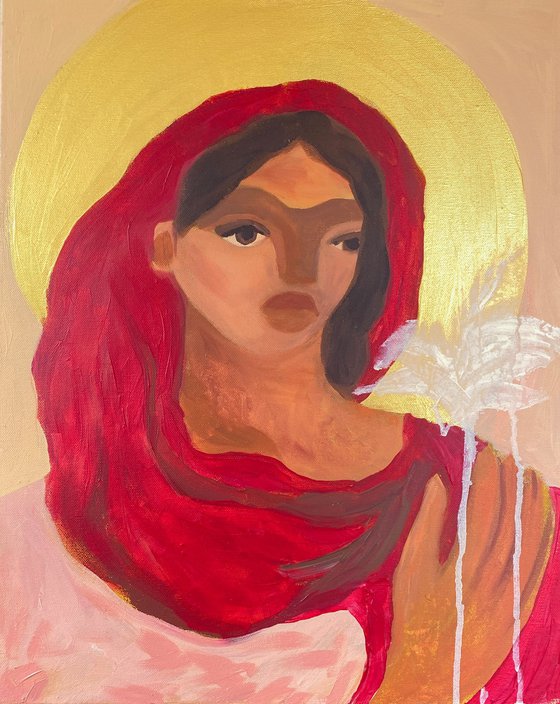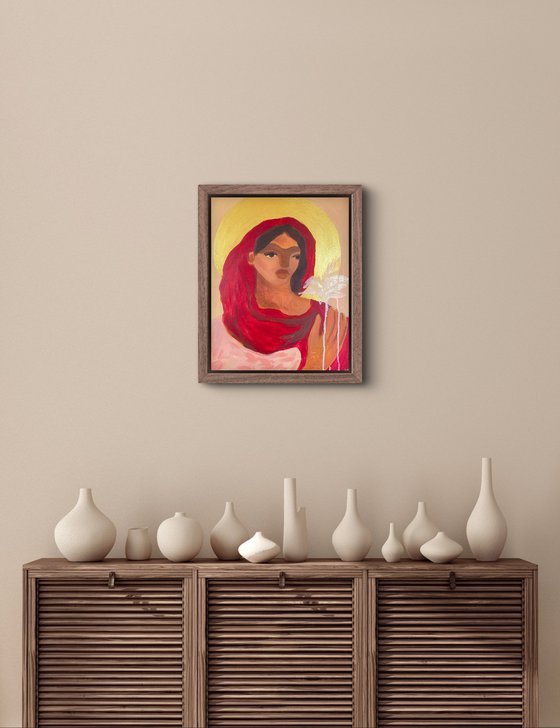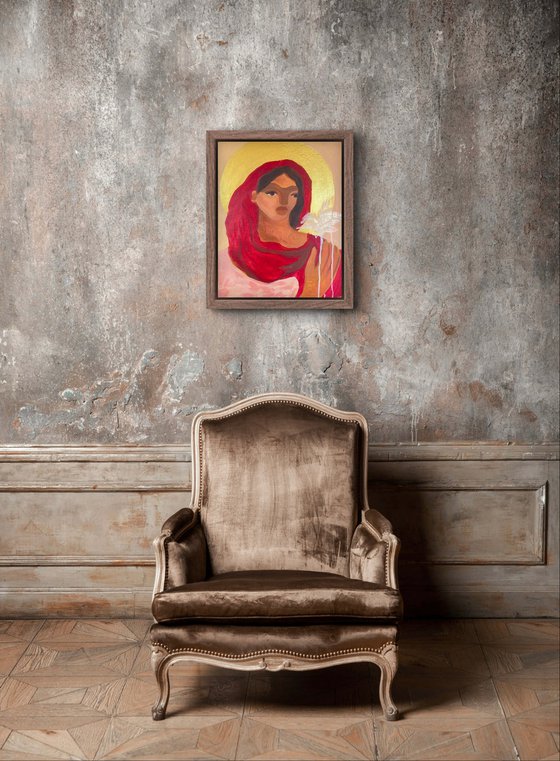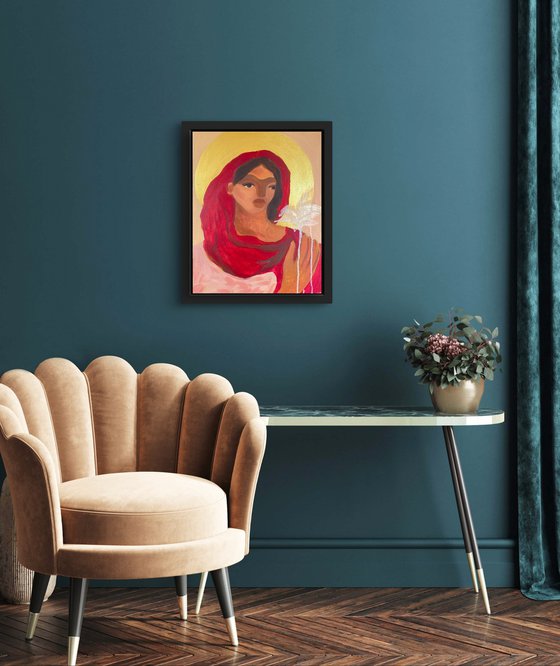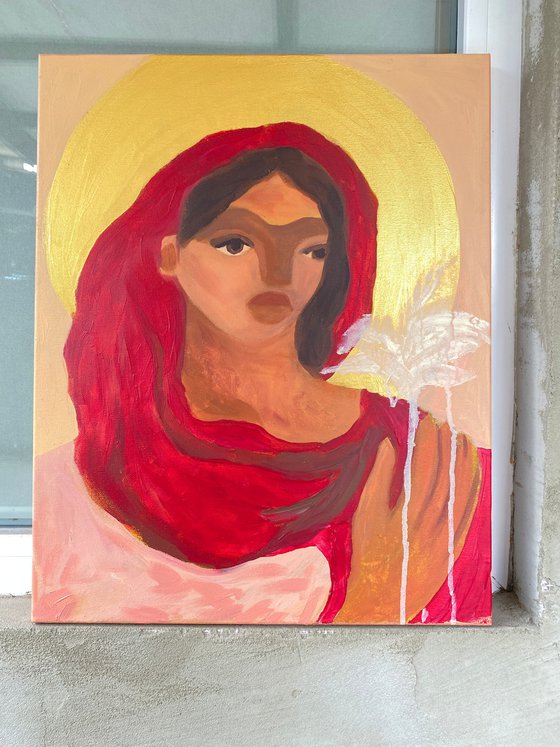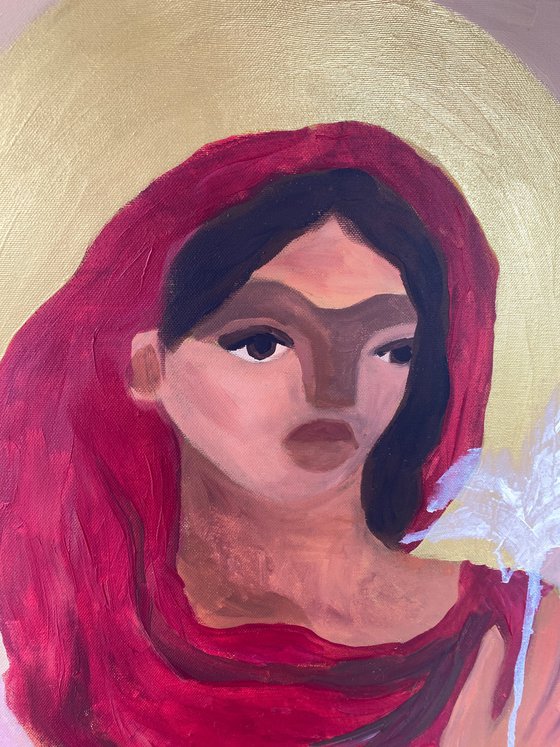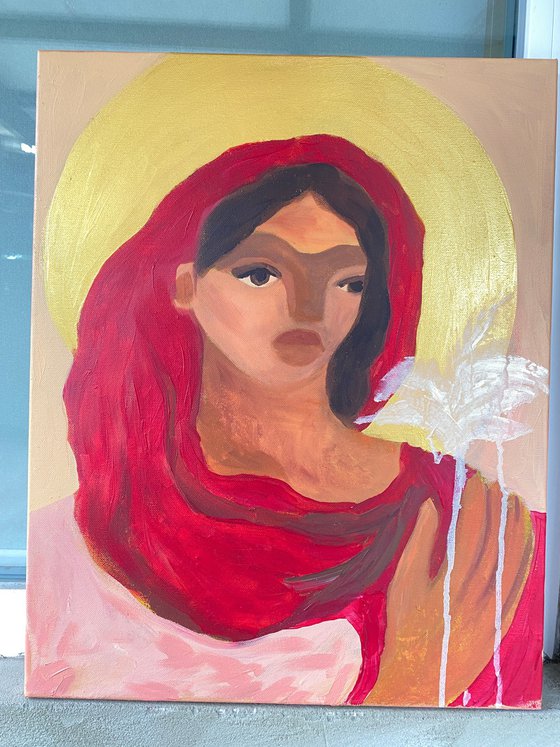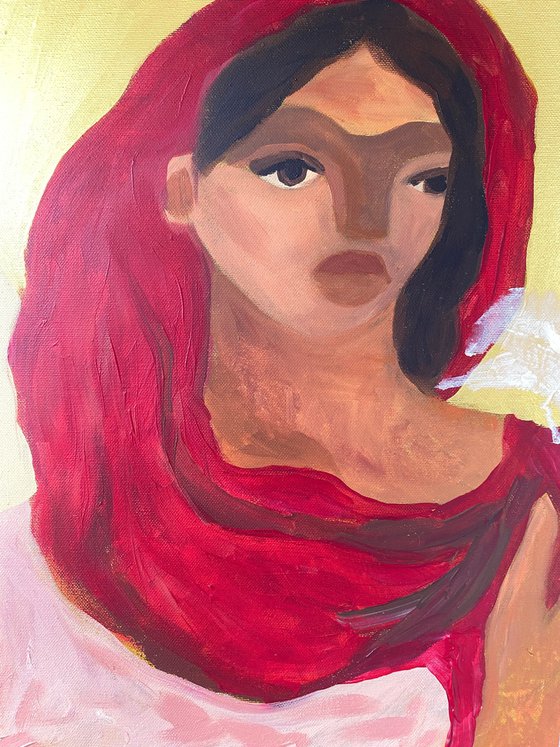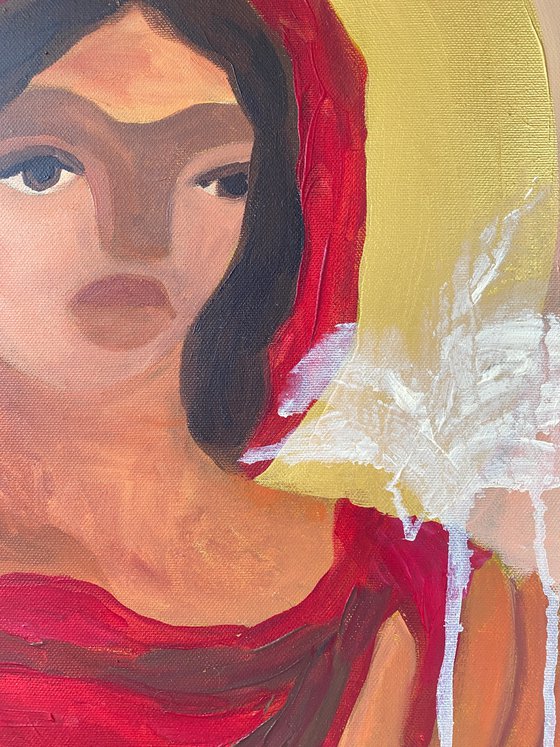Main Navigation
Original artwork description:
This painting will come to you stretched on a wooden stretcher and completely ready to be placed in the interior.
ABOUT THE ARTWORK
"Immaculate Conception #3" from the "Perichoresis" series completes a triptych of reflections on holiness embodied in the female body, gaze, and presence. This work speaks of inner freedom, where a woman is no longer perceived as the object of a miracle but becomes its conscious participant.
There is no submission in this silence—only certainty. The sacred does not come from the outside; it is born within, through deep connection with the self. This is the image of a woman who needs no justification for her strength or dignity. She knows she is enough as she is, and her divinity requires neither denial of the body nor sacrifice.
The painting embodies the idea of purity as clarity, and of immaculate as wholeness. This is not a saint detached from the world, but a woman deeply rooted in it—and precisely because of that, capable of carrying light.
PERICHORESIS SERIES
“Perichoresis” (ancient Greek περιχώρησις - “interpenetration”), a theological term meaning the mutual penetration of divine parts into each other, to describe a unique union that does not imply mixing or merging, but emphasizes an indivisible unity.
Daria explores the theme of new sexuality, deliberately choosing a term from theological treatises for her series of works.
With this gesture, she protests against the dictates of religion, the church’s manipulation and pessimization of human sexual manifestations and physicality, the false meanings and concepts with which religions have burdened, and instead of building true connections and bridges for man and God, they build walls.
“Perichoresis” for her is a beautiful and complex term that describes the fusion of the divine and the material. Having grown up in the Protestant tradition within an Orthodox society, Daria notes the common separation of sexuality from divinity in all these religions, while she sees sexuality as the clearest manifestation of divinity, beauty, and sublimity.
The artist notes that Christian culture has invested the image of the female body with a narrative of pornographic tension, while at the same time presenting paradise before the Fall as a sexual paradise, the Garden of earthly pleasures. For the artist, sexual paradise is a safe environment, complete trust, acceptance, the opportunity to open up and discover the Other, the opportunity to learn to be loved and to love.
Love is an environment where merging does not dissolve in another person, but on the contrary, strengthens the individuality of each and enriches each other.
Thus, the artist reminds that the division into the sublime and the low in love is artificial, and overcoming this division can make life more beautiful. The heroes of her paintings are immersed in the enigmatic space of love, and sometimes there are ironic scenes that balance the degree of sublimity.
Materials used:
Acrylic
Tags:
#figurative #girl #woman artworkImmaculate Conception #3 (2025) Acrylic painting
by Dasha Pogodina
7 Artist Reviews
£616.25
- Acrylic painting on Canvas
- One of a kind artwork
- Size: 40 x 50 x 2cm (unframed) / 40 x 50cm (actual image size)
- Ready to hang
- Signed on the front
- Style: Impressionistic
- Subject: People and portraits
Loading
Original artwork description
This painting will come to you stretched on a wooden stretcher and completely ready to be placed in the interior.
ABOUT THE ARTWORK
"Immaculate Conception #3" from the "Perichoresis" series completes a triptych of reflections on holiness embodied in the female body, gaze, and presence. This work speaks of inner freedom, where a woman is no longer perceived as the object of a miracle but becomes its conscious participant.
There is no submission in this silence—only certainty. The sacred does not come from the outside; it is born within, through deep connection with the self. This is the image of a woman who needs no justification for her strength or dignity. She knows she is enough as she is, and her divinity requires neither denial of the body nor sacrifice.
The painting embodies the idea of purity as clarity, and of immaculate as wholeness. This is not a saint detached from the world, but a woman deeply rooted in it—and precisely because of that, capable of carrying light.
PERICHORESIS SERIES
“Perichoresis” (ancient Greek περιχώρησις - “interpenetration”), a theological term meaning the mutual penetration of divine parts into each other, to describe a unique union that does not imply mixing or merging, but emphasizes an indivisible unity.
Daria explores the theme of new sexuality, deliberately choosing a term from theological treatises for her series of works.
With this gesture, she protests against the dictates of religion, the church’s manipulation and pessimization of human sexual manifestations and physicality, the false meanings and concepts with which religions have burdened, and instead of building true connections and bridges for man and God, they build walls.
“Perichoresis” for her is a beautiful and complex term that describes the fusion of the divine and the material. Having grown up in the Protestant tradition within an Orthodox society, Daria notes the common separation of sexuality from divinity in all these religions, while she sees sexuality as the clearest manifestation of divinity, beauty, and sublimity.
The artist notes that Christian culture has invested the image of the female body with a narrative of pornographic tension, while at the same time presenting paradise before the Fall as a sexual paradise, the Garden of earthly pleasures. For the artist, sexual paradise is a safe environment, complete trust, acceptance, the opportunity to open up and discover the Other, the opportunity to learn to be loved and to love.
Love is an environment where merging does not dissolve in another person, but on the contrary, strengthens the individuality of each and enriches each other.
Thus, the artist reminds that the division into the sublime and the low in love is artificial, and overcoming this division can make life more beautiful. The heroes of her paintings are immersed in the enigmatic space of love, and sometimes there are ironic scenes that balance the degree of sublimity.
Materials used:
Acrylic
Tags:
#figurative #girl #woman artwork14 day money back guaranteeLearn more
